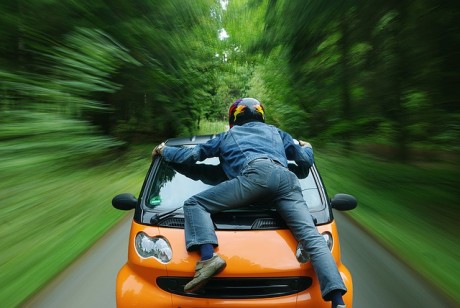For years, the focus of technology has been on PCs, tablets and smartphones. Meanwhile, the automobile business had been largely ignored. Not anymore. Although in-car technology has been around for a while, it’s only now that they are going mainstream and getting a huge popularity boost.
Car tech was mostly aimed at improving safety and navigation. But today’s smart cars offer more; in addition to the two aforementioned features, these cars are also equipped with infotainment, connectivity and autonomous driving. And we can expect even more outrageous ideas for car tech in the near future.
Automakers are now making their presence felt in Silicon Valley. The Detroit Three – Ford, GM and Fiat Chrysler – have partnered with companies in the tech capital. Mercedes Benz, Honda, Toyota and other carmakers have R&D labs here. All are in a race to make themselves competitive in the car tech industry.
Predicting what these technologies are and when they will be available is tricky business, what with automakers churning out innovations faster than consumers can keep up with. Another challenge for automakers is the upgrade course. Americans generally change cars every ten years. To address this problem, smart features in existing cars must be upgradable and open to fixing on a more frequent basis. Will the public be ready for all these?

For now, these are the smart technology we can expect to see in automobiles on the road five to twenty years in the future.
Cars that communicate with other cars
Called V2V (vehicle-to-vehicle) technology, this device gives cars the ability to talk to each other and share information about potential hazards, traffic and road conditions and the car’s speed and movements. Maarten Sierhuis, director of Nissan’s R & D in Sunnyvale, California looks forward to the day when data about all vehicles is available to everyone through cloud storage. He likens it to “crowdsourcing the driving experience.”
This technology is being tested in Ann Arbor, MI, with almost 3,000 vehicles furnished with prototype V2V equipment taking part in a pilot program of the University of Michigan and the U.S. Department of Transportation. By 2017, V2V will become a standard feature on all cars and light trucks.
Autonomous cars
Google is now running autonomous, or self-driving, cars in California and Nevada but with a human driver behind the wheel. The totally autonomous car, where the driver reads the newspaper while having his cup of coffee, may still be light years away from being street legal.
Semi-autonomous cars have been available to the public some years back. Mercedes Benz and BMW have loaded their cars with automatic parking, lane switching, intelligent cruise control and other assisted driving specs through sensors, radars and cameras.
An obstacle that will delay the release of fully automated cars on the roads will be government regulations and legal issues. New laws need to be established and existing laws modified. And in an accident where the self-driving car makes a decision to protect its occupant but injures the other party, who will be held responsible?
On the hilarious side, can smart cars outsmart lenders from disabling cars used as collateral in car title loans? Will Google be able to convince people to buy its self-driving car that has no steering wheel, accelerator or brake pedals? Can it get them to fully trust a car and risk their lives by giving complete control of driving to a car?
Cars that infotain
In-car infotainment as a factor in distracted driving is common knowledge. But that was for traditional cars. Today’s smart tech cars have dashboard touchscreens combined with heads-up display that actually focuses the driver’s attention on the road.
The infotainment system provides many options. Aside from the usual streaming music and messaging features, traffic and navigation aids are beamed on the heads-up display. Even the name of an incoming caller can be viewed without the driver having to glance at his phone.
Driver-friendly tech allows in-car systems to work with mobile devices. For example, some automakers have hooked up with Apple for an in-car eyes-free Siri, iPhone’s voice assistant, to send messages, activate navigation or creae calendar events, all while driving.
Related Reading
Google to Rule the Earth
Originally posted on May 20, 2016 @ 2:06 am
